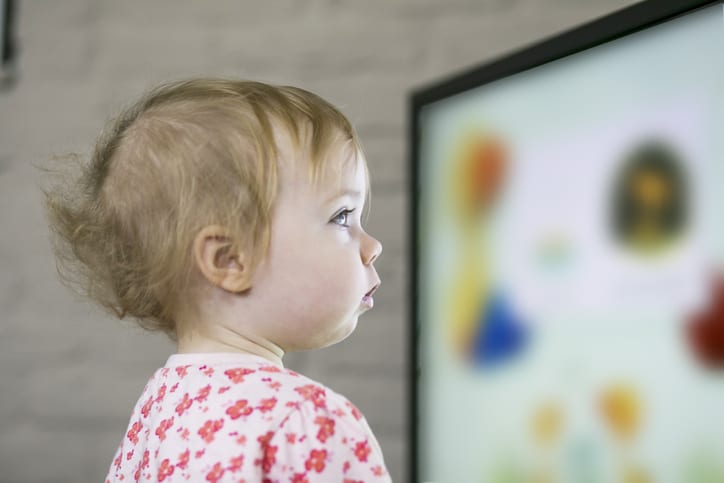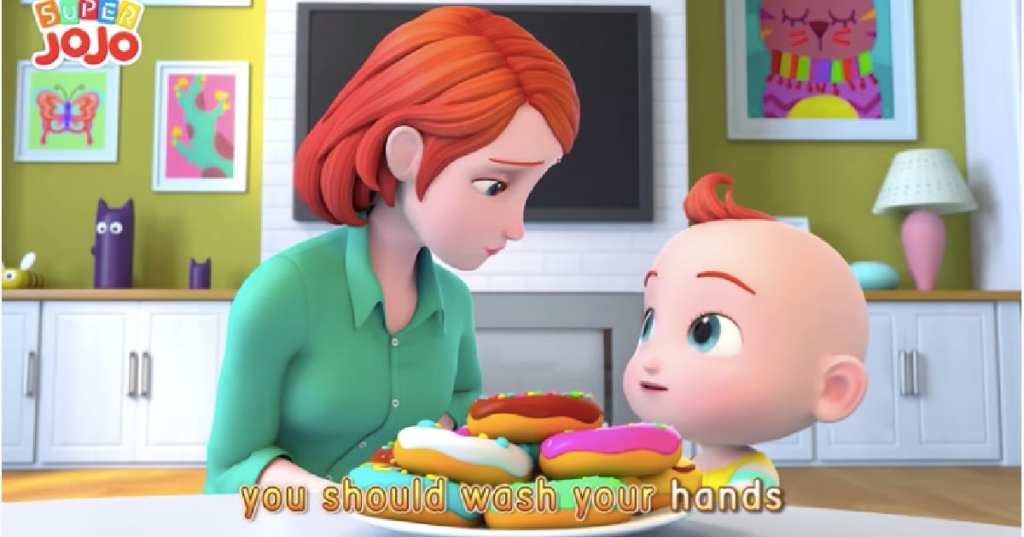When my preschooler was littler, we watched hours and hours of Little Baby Bum on Netflix. It’s a British nursery rhyme show that my little zoned in on like some kind of zombie.
With my second, they’re both completely obsessed with Cocomelon, both on Netflix and on YouTube Kids.

Image Credit: iStock
It’s similar, with nursery rhymes set to music and pretty realistic 3D animation, but with fewer British-ism and seemingly endless videos.
It might surprise you to learn that most, if not all, children’s program has a science behind it that draws kids in and keeps their attention, hopefully while teaching them a thing or two. Experts like Dr. Nicole Beurkens say it’s a mixture of realistic animation, repetition, and bright, flashing colors – and shows like Cocomelon have all three in spades.
“Infants, toddlers, and preschoolers find these programs attractive because they provide a multi-sensory experience that is engaging without being overwhelming. Young children are drawn to the bright visuals – especially the focus on big eyes and faces – the repetitive music and sounds, and the constant movement and action on the screen.”
She believes that what sets Cocomelon apart from the others is that it’s walking the fine line between stimulation and overwhelm with ease.
“The graphics are simple, and characters often have larger heads/faces because babies and children are naturally drawn to them, just as they are to the faces of people in real life.
These videos have constant action, but not so fast-paced that it is overwhelming.”
The brightness of the images also factor in says Dr. Laura Froyen, a family therapist.
“Babies and toddlers are naturally attracted to bright, flashy visuals mainly because their vision is still developing.
They tend to prefer brighter colors with more contrast because they can see them better.
They also are easily distracted, so fast moving and flashy images hold their attention longer by consistently redirecting their focus.”
In addition to the colors – red, blue, and green are seen repeatedly in the videos, which will help your child learn to name them in time.
https://youtu.be/yQWMdFXEzLQ
The repetition of the familiar nursery rhymes draw kids in, says Beurkens.
“Children’s brains thrive on patterns and routine. There are patterns of visuals, sound effects, music, and the flow of activities that is consistent and predictable throughout each video episode.”
And as annoying as listening to the same thing over and over can be for an adult, Froyen promises that children actually do learn from it.
“Children often want to hear the same songs and read the same stories over and over because that is how they learn best.
They have very limited long-term memories, and so they use strategies like rehearsing and repetition to move things that are important to them from working memory into short-term memory.
Repetition is also one way they process new information.”
You might be thinking, ‘okay, that’s interesting, but should I really let my baby watch this stuff instead of interacting with them myself?’
As with everything in life, experts like Froyen recommend striking a balance.
“Currently the American Academy of Pediatrics does recommend limiting screens for children under 2 to one hour a day or less of high quality programming, and that parents view alongside their child and then reteach and rehearse afterward.
They strongly recommend that kids under 18 months only use screens interactively, like for video chatting.
That said, balance is incredibly important, and if a show your child loves allows you to make a meal or engage in self-case, it’s OK to consider the health and well-being of the whole family.”
Basically, she recognizes that being a parent is tough, and being a parent in a pandemic is something none of us were ready for, so go easy on yourselves, y’all.
If you need a thirty minute break here and there and YouTube Kids and CoComelon are the only reliable ways to get it, try not to feel too badly.
Easier said than done, but once life is back to some semblance of normal, we can all readjust.
